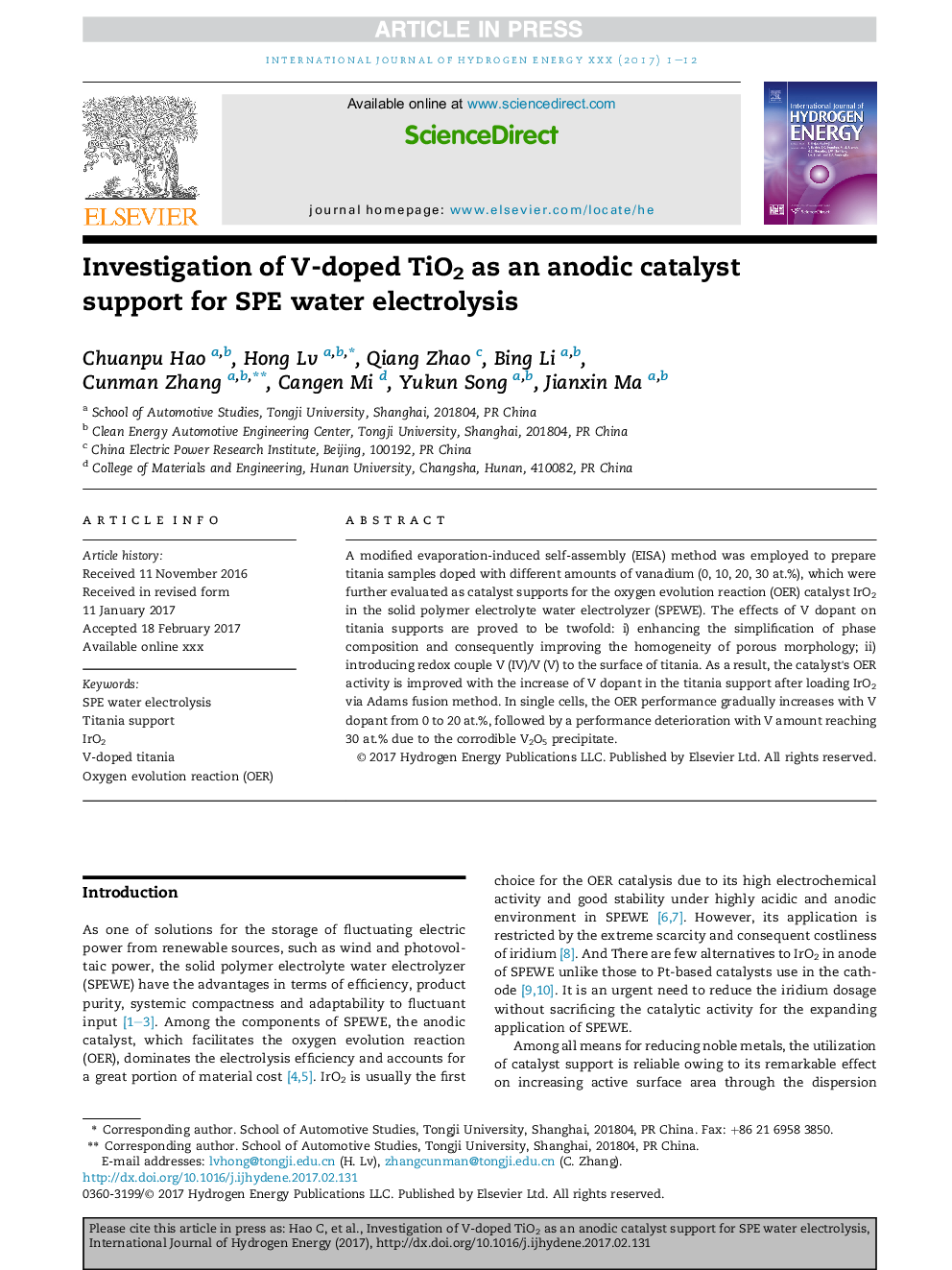| Article ID | Journal | Published Year | Pages | File Type |
|---|---|---|---|---|
| 5147915 | International Journal of Hydrogen Energy | 2017 | 12 Pages |
Abstract
A modified evaporation-induced self-assembly (EISA) method was employed to prepare titania samples doped with different amounts of vanadium (0, 10, 20, 30Â at.%), which were further evaluated as catalyst supports for the oxygen evolution reaction (OER) catalyst IrO2 in the solid polymer electrolyte water electrolyzer (SPEWE). The effects of V dopant on titania supports are proved to be twofold: i) enhancing the simplification of phase composition and consequently improving the homogeneity of porous morphology; ii) introducing redox couple V (IV)/V (V) to the surface of titania. As a result, the catalyst's OER activity is improved with the increase of V dopant in the titania support after loading IrO2 via Adams fusion method. In single cells, the OER performance gradually increases with V dopant from 0 to 20Â at.%, followed by a performance deterioration with V amount reaching 30Â at.% due to the corrodible V2O5 precipitate.
Related Topics
Physical Sciences and Engineering
Chemistry
Electrochemistry
Authors
Chuanpu Hao, Hong Lv, Qiang Zhao, Bing Li, Cunman Zhang, Cangen Mi, Yukun Song, Jianxin Ma,
